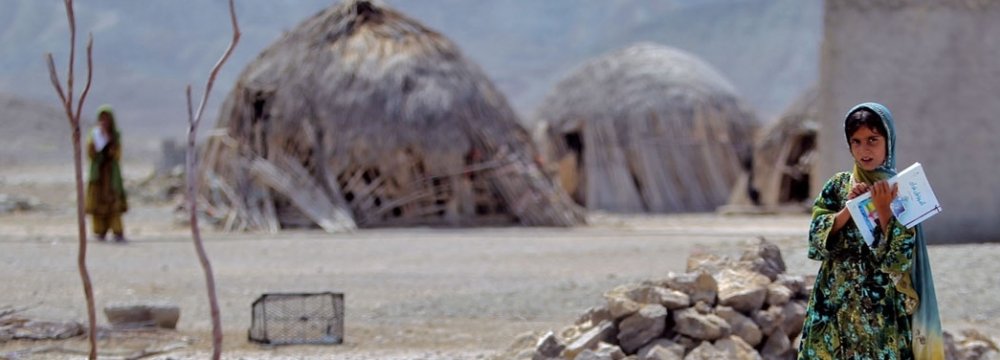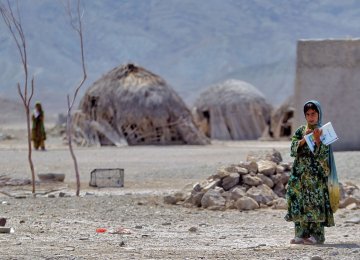A total of 26% of Iranian households (4.8 million) in urban areas had no employed member in the last fiscal year (ended March 20, 2017), according to data released by the Central Bank of Iran.
In March 2007-8, this percentage was at 17.3%. Three years later, it hit 22.5% and when Hassan Rouhani assumed office as Iran’s president in August 2013, it was already 24%.
This rapid pace of growth in the number of households without a working member slowed down under Rouhani’s first administration and reached 26.4% in 2015-16, the Persian weekly Seda reported.
The number of employed families has also been on the decline over the past 10 years. There was one employed member in 57.5% of the households in 2007-8, which dropped to 56.4% last year. Likewise, the number of families with two or three employed persons was down to 14.2% last year from 19.5% a decade ago.
The CBI report also shows 7.1% or nearly 1.27 million Iranian households lived on an annual income of less than 50 million rials ($1250) or 4.16 million rials ($104) a month.
Assuming that each household consists of two members, there are about 2.55 million people living in extreme poverty. It is not wrong to say that these people have no other source of income, except for monthly subsidies granted by the government and Imam Khomeini Relief Committee.
Generally, about 15% of households live on less than 96 million rials ($2,400) a year. There are about 2.72 million households with an average of three members, showing that about 8.17 million urban residents live on less than 8 million rials ($200) a month, which is below the absolute poverty line.
Considering that 20 million people live in rural areas, it is estimated that 12 million Iranians live below the absolute poverty line.
Last year, the parliament tasked the government with reducing unemployment rate by 0.8% a year as per the Sixth Five-Year Development Plan (2017-22), which mission is considered impossible by Saeed Laylaz, an economics expert and distinguished professor at Tehran’s Shahid Beheshti University.
Unemployment rate won’t decline by command, he said back then.
“Five million graduates plus one million without university degrees will enter the job market over the next five years, so we need to create around six million jobs to keep the current unemployment rate steady, which is impossible. On top of that, there are no resources for creating new jobs,” he said.
Iran’s unemployment rate stood at 12.4% last year, registering a 1.4% rise compared with the year before, according to the Statistical Center of Iran.
About 3.2 million Iranians were unemployed last year—10.5% of men (or 2.19 million) and 20.7% of women (or 1.01 million) of ages 10 and above. The unemployment rate was 13.7% for urban areas and 8.9% for rural areas. Joblessness was higher among women compared to men and among those living in urban areas. The youth unemployment rate, i.e. the proportion of population between the ages of 15 and 29, stood at 25.9% this year, posting a 2.6% rise compared with last year.
Between 2014-15 and 2016-17, the economy grew from -6.8% to 12.5%, but there was not much improvement in the unemployment rate.
Civil servants’ purchasing power reduced by 73% between 2005-6 and 2013-14. Only in 2011, workers’ purchasing power declined by 11%.
“Iran’s per capita income will be equal to what it was in 2011-12 by March 2019. Civil servants and workers’ purchasing power will be restored to what it was in 2005-6 between 2016-27 and 2031-32. When the economy in its entirety turns negative, you can’t bring about job growth by decree,” he said.
The only way out of the unemployment crisis, Laylaz said, is to add an average of 800,000 to 900,000 jobs to the economy annually.
According to the president’s senior advisor, Masoud Nili, the government of President Hassan Rouhani has created an average of 704,000 jobs annually.
“We need to bear in mind that the construction sector was the main driver of Iran’s economic growth over the past 60 years. However, the economy is unlikely to experience any explosion of housing demand henceforth. So there is no option but to boost new sectors and productive investment, which have been on the decline in recent years,” he concluded.






Add new comment
Read our comment policy before posting your viewpoints